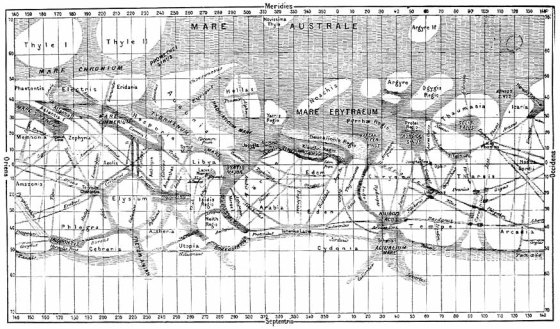Hello, friends! Welcome back to the A to Z Challenge. My theme for this year’s challenge is the planet Mercury, and in today’s post Q is for:
q
Today, I’m going to expand a little on something we already talked about in a previous post. Back in the late 1800’s, Italian astronomer Giovanni Schiaparelli made a bold effort to observe and characterize the planet Mercury. He saw several prominent surface features (or at least he thought he saw them), and he determined that Mercury has a rotation period that is approximately 88 Earth days long (we now know this is incorrect). So what happened? Where did Schiaparelli go wrong?
In a previous post, I told you about Schiaparelli’s five. When he looked in his telescope, he kept seeing a surface feature on Mercury that looked like a gigantic numeral five. Looking at photographs of Mercury today, most people can’t find Schiaparelli’s five, and it’s really unclear what the heck Schiaparelli was looking at.
Specifically, Schiaparelli saw (or thought he saw) this gigantic five whenever Mercury happened to be east of the Sun, as seen in Earth’s sky. And whenever Mercury appeared west of the Sun, as viewed from Earth, Schiaparelli saw (or thought he saw) a different large surface feature. On his hand drawn maps on Mercury, Schiaparelli labeled this other large surface feature “q” (always lower case).
Unlike Schiaparelli’s five, which supposedly looked like the number five, q did not look like the letter q. In Schiaparelli’s drawings of q, it reminds me a little of that Æ symbol (the combination of A and E) that you sometimes see in fantasy novels, very old English literature, and a few modern languages like Icelandic or Norwegian. I’m not sure why this Æ feature got named q, but Schiaparelli labeled several other surface features on Mercury with lower case letters, so there must have been some method to his madness.
The important thing is that the five and q appeared, consistently, when Mercury reached certain points in his orbital path—either east of the Sun for the five or west of the Sun for q, as viewed from Earth. Or at least they appeared consistently whenever Schiaparelli went looking for them.
The surface of Mercury is covered in light and dark splotches, making it a bit like a Rorschach test. You see whatever your brain wants to see in those light and dark patterns. I have tried my best to match Schiaparelli’s hand drawn maps to actual photos of Mercury. I can kind of see the five, some of the time, but it takes a little squinting and a lot of imagination to make things line up right. I cannot find q, no matter how hard I try.
But Schiaparelli wasn’t too far off to believe he was seeing the same surface features time and again, whenever Mercury reached specific points in his orbital path. Schiaparelli was only half wrong about that. Exactly half wrong, in a sense. I will try to explain what I mean by that in tomorrow’s post.
WANT TO LEARN MORE?
For this third time this month, I’d like to recommend Mercury, by William Sheehan. It’s part of the Kosmos series, published by Reaktion Books, and it includes a lengthy and fascinating discussion of Schiaparelli and his sightings of five and q on Mercury.








